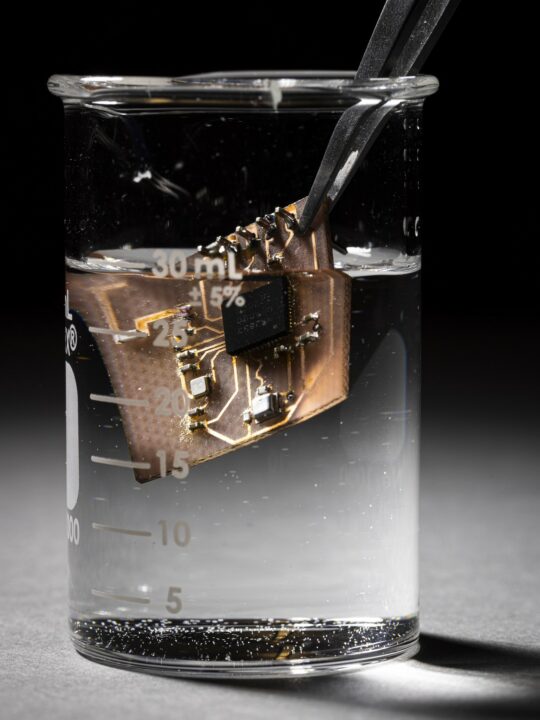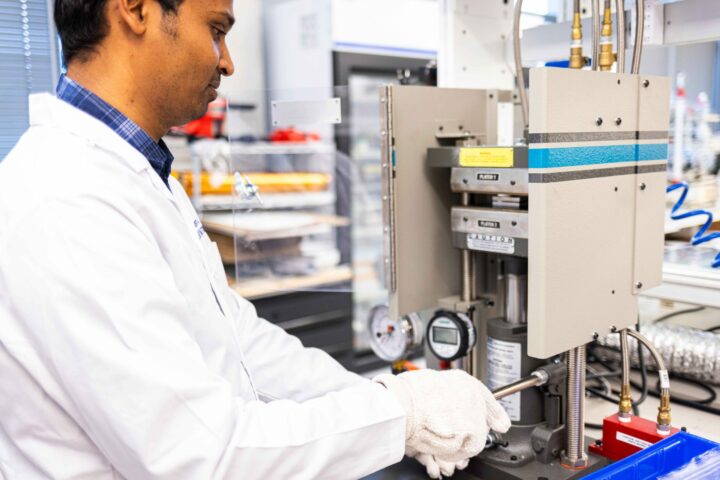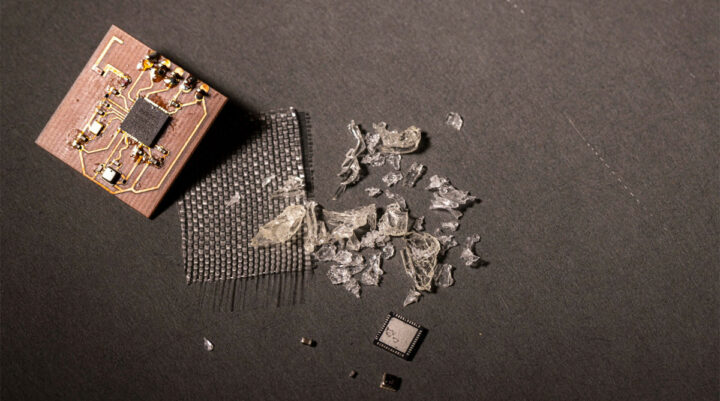Ludwik Leibler a Polish-born French physicist and his team from the Laboratoire Matière Molle et Chimie at ESPCI ParisTech created a new class of plastics known as “vitrimers” and material researchers at the University of Washington (UW) have leveraged the new plastics to develop a recyclable PCB (printed circuit board) known as “Vitrimers PCB” (vPCB) that can be recycled many times over.
The team tested their vPCB for strength and electrical properties and found that they are very similar to standard FR-4 PCB material. This means Vitrimers PCBs could offer a solution to reduce landfill waste and make it easier to recycle leftover copper, maximizing resource recovery.
Key Features of Vitrimers-based Recyclable PCBs:
- Base material – Employs vitrimer epoxy, a type of polymer that can be repeatedly cured and uncured without damage.
- Environmentally sustainable – Designed to reduce e-waste and offer a more circular lifecycle for electronics.
- Performance – Electrical and mechanical properties comparable to common FR-4 PCB materials.
- Recyclability:
- Damaged boards can be repaired under heat and pressure.
- Components are easily removed for reuse or responsible recycling.
- Base vitrimer and glass fibers are recoverable and reusable in new PCBs.
- It has demonstrated high recovery rates of vitrimer, glass fiber, and solvent used in the process.
- Manufacturing compatibility – Minimal changes are needed for existing PCB manufacturing processes.
Vitrimers are a unique class of polymers that combine the properties of both thermoplastics and thermosets. It is made of two-part thermoset epoxy and does not require any new or exotic process to make it. Additionally, it promises a high degree of recyclability without harmful side effects. The material features unique properties it can flow and be reshaped when heated (like thermoplastics) but also form strong, cross-linked networks when cooled (like thermosets). Vitrimers have gained attention because of their self-healing properties and recyclability.
Epoxy on the other hand consists of long hydrocarbon chains that interlock during curing, making them stable and inseparable. However, vitrimer materials are different, while their chains intertwine upon curing like typical polymers, they have the properties to unwind when exposed to heat or specific solvents. This is why they can go through multiple cycles of curing, uncuring, and recuring without degradation, making them recoverable for recycling.

The vPCB (vitrimer printed circuit board) is treated with a solvent to separate the vitrimer into a jelly form, allowing easy recovery of the glass fiber mat and metal PCB traces. Researchers recovered 98% of the vitrimer and 100% of the glass fiber, as well as 91% of the solvent used for recycling. The team also analyzed the environmental impact and found that vPCBs could result in a 48% reduction in global warming potential and an 81% reduction in carcinogenic emissions compared to traditional PCBs.
On paper, this new Vitrimers PCB offers a great environment-friendly solution, but to implement this in a real-world scenario manufacturing needs to be cost-competitive, Incentives and regulations are needed to encourage the collection and recycling of e-waste, and further research is needed to find that this new material can handle demanding high speed and RF applications.
The UW team also mentioned that they have manufactured functional prototypes of Internet of Things devices transmitting 2.4 GHz radio signals on vPCBs with electrical and mechanical properties meeting industry standards.

More information on this Vermiters-based recyclable PCB can be found on the UW news page. The researchers mention that further research is ongoing to develop even better vitrimer materials for a wider range of applications.
Debashis Das is a technical content writer and embedded engineer with over five years of experience in the industry. With expertise in Embedded C, PCB Design, and SEO optimization, he effectively blends difficult technical topics with clear communication
Support CNX Software! Donate via cryptocurrencies, become a Patron on Patreon, or purchase goods on Amazon or Aliexpress





